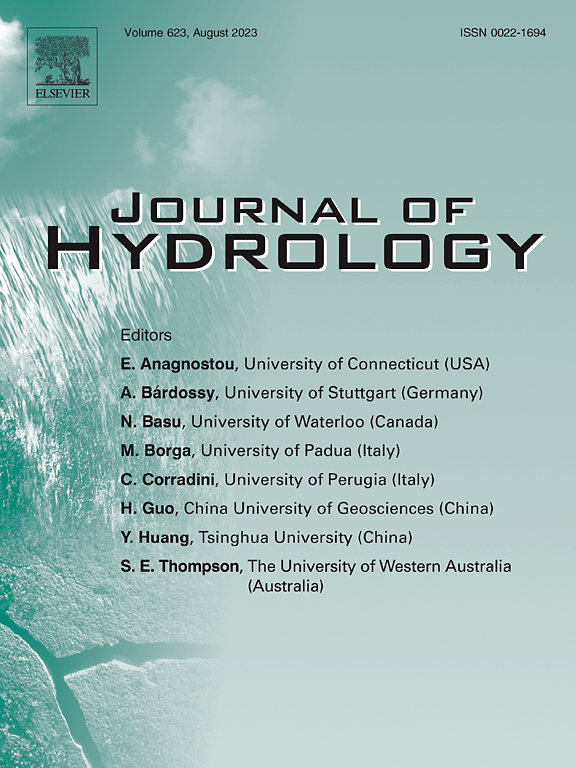Historical occurrence of and shift in snow drought drivers in global mountain ranges
IF 5.9
1区 地球科学
Q1 ENGINEERING, CIVIL
引用次数: 0
Abstract
Snow is a critical form of water storage, but climate change is reducing snowpack and affecting water resources. Snow droughts are periods of abnormally low snowpack that are driven by low precipitation or high temperatures, or both. Globally, we do not have a good understanding of how snow drought drivers have changed over time. Here, we used a multivariate snow drought index to identify the dominant driver of snow droughts between 1980 and 2021 in all global mountain ranges and ones that are highly dependent on winter precipitation for water. We then identified whether those drivers shifted during the study period. Finally, we identified what similarities exist based on climatological areas by using snow classification types, including forest, montane, maritime, tundra, prairie, and ephemeral, as a proxy. We found that in both the Northern and Southern Hemispheres, dry snow droughts (driven by low precipitation) are the most common. Furthermore, in both the Northern and Southern Hemispheres, more mountain range area shifted to having temperature be the main driver of snow droughts in the historical record. In the Northern Hemisphere, dry snow droughts affected the largest amount of area in tundra, boreal, prairie, and ice snow types. In the Southern Hemisphere, warm snow droughts affected the largest amount of area in all snow types except for tundra. This work identified common snow drought drivers and patterns that exist across similar geographical areas (i.e., mountain ranges) and climatological areas and areas that are most vulnerable to warm and dry snow droughts.
全球山区雪旱驱动因素的历史发生和变化
雪是水储存的一种重要形式,但气候变化正在减少积雪并影响水资源。雪旱是指由于降水少或气温高,或两者兼而有之而导致的积雪异常少的时期。在全球范围内,我们对雪旱驱动因素如何随着时间的推移而变化并没有很好的了解。在这里,我们使用多元雪干旱指数来确定1980年至2021年间全球所有山脉的雪干旱的主要驱动因素,以及高度依赖冬季降水的山区。然后,我们确定这些驱动因素在研究期间是否发生了变化。最后,通过使用森林、山地、海洋、苔原、草原和短暂性的积雪分类类型作为代理,我们确定了基于气候区域存在的相似性。我们发现,在北半球和南半球,干雪干旱(由低降水驱动)是最常见的。此外,在北半球和南半球,越来越多的山脉面积转变为历史记录中温度成为雪旱的主要驱动因素。在北半球,冻土带、寒带、草原和冰雪类型的旱雪干旱影响面积最大。在南半球,除冻土带外,暖雪干旱对所有雪类型的影响面积最大。这项工作确定了存在于相似地理区域(即山脉)和气候区域以及最容易受到温暖和干燥雪干旱影响的地区的常见雪干旱驱动因素和模式。
本文章由计算机程序翻译,如有差异,请以英文原文为准。
求助全文
约1分钟内获得全文
求助全文
来源期刊

Journal of Hydrology
地学-地球科学综合
CiteScore
11.00
自引率
12.50%
发文量
1309
审稿时长
7.5 months
期刊介绍:
The Journal of Hydrology publishes original research papers and comprehensive reviews in all the subfields of the hydrological sciences including water based management and policy issues that impact on economics and society. These comprise, but are not limited to the physical, chemical, biogeochemical, stochastic and systems aspects of surface and groundwater hydrology, hydrometeorology and hydrogeology. Relevant topics incorporating the insights and methodologies of disciplines such as climatology, water resource systems, hydraulics, agrohydrology, geomorphology, soil science, instrumentation and remote sensing, civil and environmental engineering are included. Social science perspectives on hydrological problems such as resource and ecological economics, environmental sociology, psychology and behavioural science, management and policy analysis are also invited. Multi-and interdisciplinary analyses of hydrological problems are within scope. The science published in the Journal of Hydrology is relevant to catchment scales rather than exclusively to a local scale or site.
 求助内容:
求助内容: 应助结果提醒方式:
应助结果提醒方式:


